Evo WA, with those two letters standing for walkaround, has probably the ideal layout for such a boat. IT features even more space outside than the Evo 43.
There is no doubt about the uniqueness of Evo. If anything, the presentation of Evo WA could have been a bit too much, as the first version with closed foredeck already featured plenty of outside space. But after a test in Cannes I immediately had to change my mind and now I’ll explain why.

Evo 43 WA, the test
In the frenzy of the boat show we just get on board and straight away we get off the moorings. The weather is not ideal for the huge outdoor spaces of the boat: on the contrary I appreciate the carbon t-top, protective enough in case it rains. In reality it was not designed for this and it will certainly be more useful on sunny days, still I like the look and the remarkable workmanship, with extensive use of carbon fiber.
10 passengers: not an optimal setting for a test, but closer to normal use. There is also a lot of fresh water in the tanks (400 liters) and this, combined with the not very calm sea conditions, could explain why we reach a top speed of 34 knots and not the 38 declared.
The trim is automatic so I have to trust it is choosing the best setup, but at the same time I notice that in the beginning the nose gets up a lot, and during navigation the passage on the wave denounces a hull that prefers quieter waters.
All considered, and given the limited difference of the final price, I think the Volvo Penta IPS600 choice is better than the IPS500 proposed alternatively. During planing navigation the wake is consistent, and in fact the captain doesn’t let us on the throttle levers when slowing down: the feeling is that with a sudden stop the stern area of the cockpit would be flooded, also because it is even with the swim platform, which in navigation is rather wet.

Evo WA, on board
Evo WA expresses its best when at anchor. The hydraulic aft platform can be submerged with a real ladder for descent, or raised as a trampoline and still with the ladder to access it: this is definitely an extraordinary “killer application”. And, what about the two chaise longues on the sides of the table: everything can disappear and “arise” from the cockpit floor to create a living room flush with the water. Alternatively, you can opt for three chaise longues without the table. Then again, the aft sections of the two sides, the distinctive feature of the Evo, tilt down to widen the cockpit, and along with the modular cushions can create an unequaled terrace on the sea. Moving to bow, under the t-top the kitchenette is to port, completely hidden by a long cushion, while to starboard an icebox is located under the driver’s seat.



The dashboard looks very cool in its linear design, just a pity that the Volvo Penta Ips throttle levers are so inclined to hinder the visibility on the control keys. Then again, there’s no way to place any object on the dash: the clear and curved surface will drop it on the floor immediately. Two large and safe passageways lead to the large bow solarium. A large locker to front hosts the anchor winch and has stowage space for the fenders.


If you think that belowdecks Evo WA the space is cramped, then you are wrong. A bunk is placed behind the ladder under the cockpit, while to bow the forward berth turns into a dinette in a minute. To complete the whole features, there’s a large bathroom, while the quality of materials and the care of the finishing is at the top.

The numbers of Evo WA
- Length overall …………………… 13.04 m
- Length LH ………………………… 11.35 m
- Beam …………………………..…… 4.52 m
- Beam with open sides ………… 6.31 m
- Draft ………………………………… 1.10 m
- Dry displacement ……………… 11.500 Kg
- Engines ………………….………… Volvo Penta IPS600 2×435 HP
- Fuel reserve ……………………… 1.000 l (264 US gal)
- Fresh water reserve …………… l 400 (105 US gal)
- Cabins ……………………………… 2
- Berths ……………………………… 4
- Passengers ………………….…… 12
- CE design category …………… A
Performance
-
- rpm knots mph lph nm/l range* dB
- 1000 ……….. 6,5 ……….. 7,5 ………… 7,7 ………….. 0,84 …………… 675 ………….. 66
- 1500 ……….. 8,5 ……….. 9,8 ………… 21 …………… 0,40 ………….. 324 ………….. 66
- 2000 ………. 11,0 ………. 12,7 ……….. 60 ………….. 0,18 …………… 147 …………… 73
- 2500 ……….. 17,0 ……… 19,6 ……….. 84 ………….. 0,20 ………….. 162 …………… 75
- 3000 ………. 27,0 ……… 31,1 ………… 122 ………… 0,22 …………… 177 …………… 80
- 3500 ………. 34,0 ……… 39,1 ……….. 168 …………. 0,20 ………….. 162 …………… 83
*(20% reserve)
Test conditions
- Calm/moderate sea, clean hull, fuel 360 l (95 US gal), water 350 l (92 US gal), 10 passengers.
Indicative price (VAT not included)
- Volvo Penta IPS500 2×370 HP ………………… € 517.000
- Volvo Penta IPS600 2×435 HP ………………… € 532.000
Evo WA: the walk around expands
The cockpit that opens on the sea remains the mainstay of all design development, so two years after the launch of the first Evo 43′, which still gathers consent in Europe and America, the yard is preparing to unveil the new yacht, which carries on what is called “Opening rEVOlution“: Evo WA.
Easily moving
between the stern
and the bow
As mentioned, Evo WA shares with the previous Evo 43′ the same minimalist design concept featuring the aft side openings dubbed “XTension“. The interior and exterior design is by Valerio Rivellini from the namesake studio, while the building was made by Blu Emme Yachts.
But the most distinctive feature of this second 13 meter model is the ability to move smoothly between the stern area and the extreme bow of the boat, walking around the piloting console: hence the WA in the name. All onboard operations are made easier by the latest generation of domotics that allows you to manage the boat with an iPad running all the navigation parameters and the basic functions of the yacht. In designing Evo WA, however, a deal of attention had to go to performance: the Volvo Penta IPS 600 2 x 435 HP engines combined with deep V hull (18° deadrise) allow the boat to touch a maximum speed of 38 knots and a cruising speed of 30 knots.

To side the new model in Cannes there will be an Evo 43′ in the new Light Grey livery, with a new cockpit awning, and a second premiere, namely Evo 43′ Enchanted Blue in the HT version, that is with full carbon T-top as trends require.




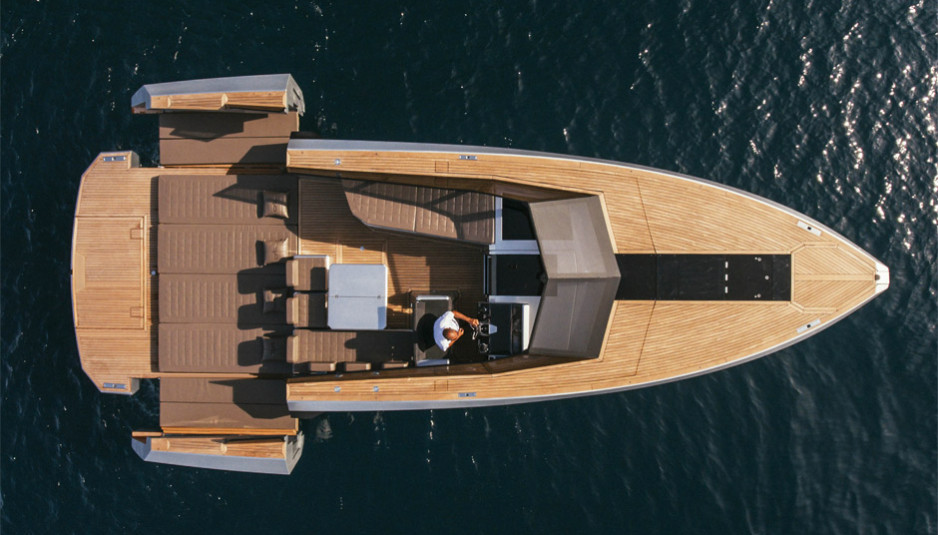

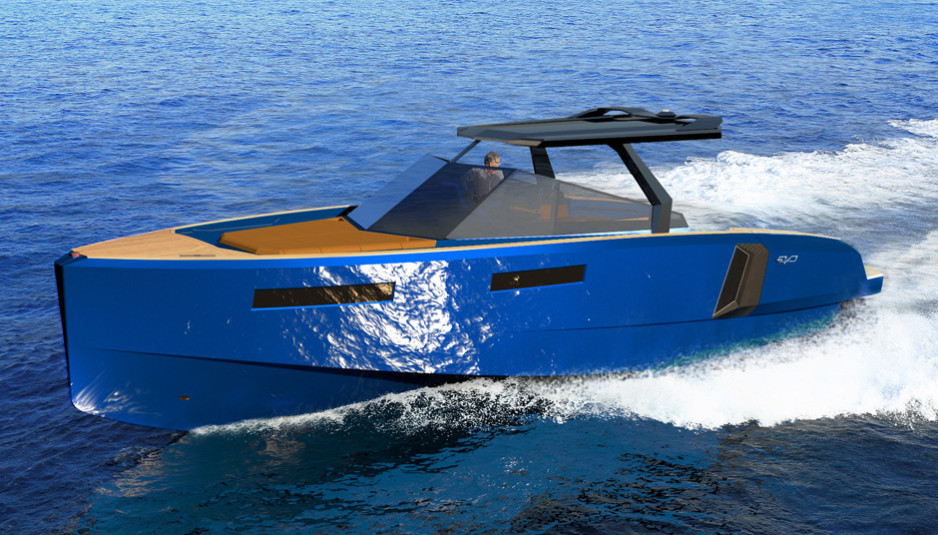




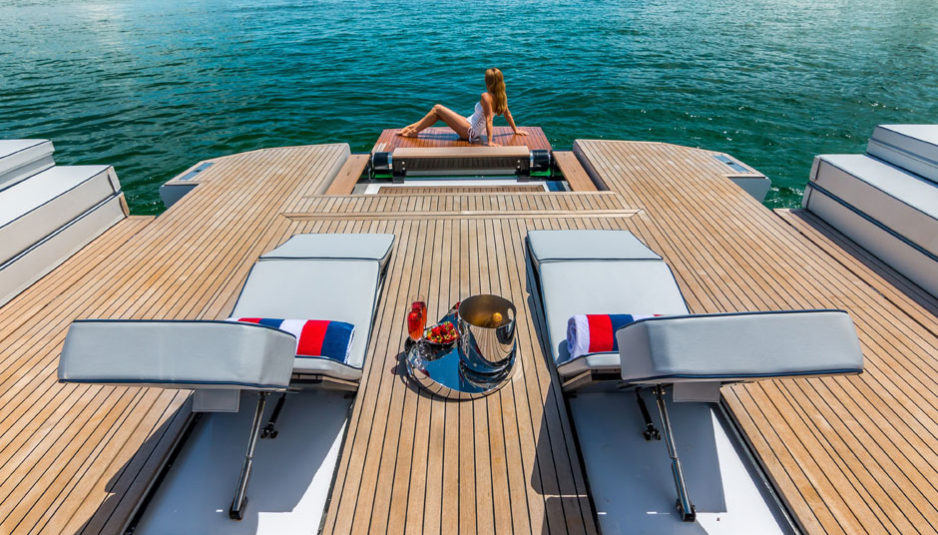















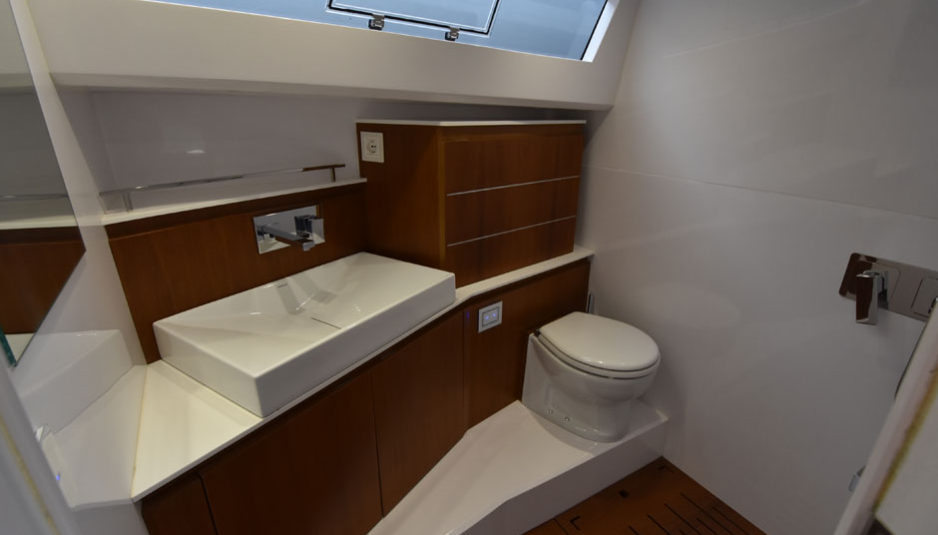
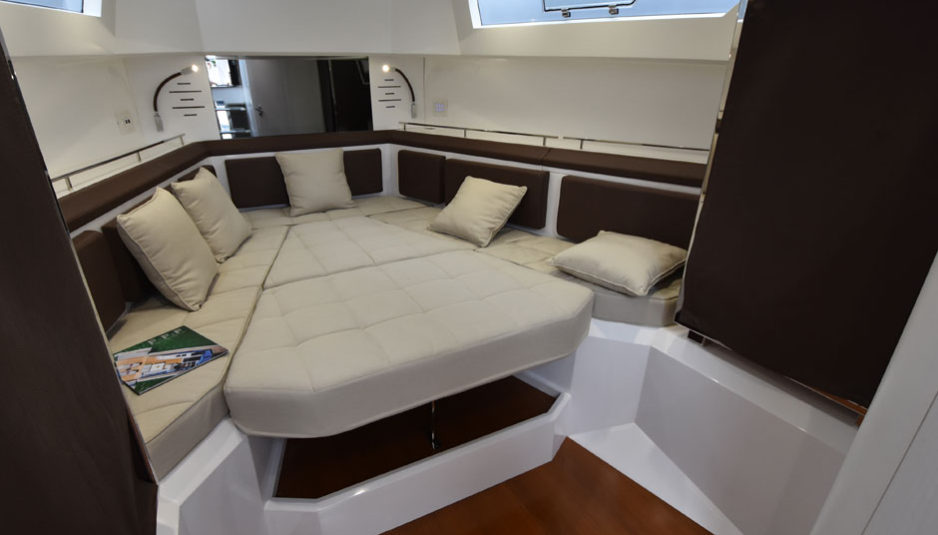












Follow Us
1251 Fans